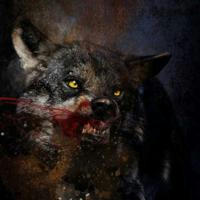
COLE WOLFSSON
Pre-Abrahamic Religion & History. Pagan Æsthetics & Pro-Nature posting. https://linktr.ee/ColeWolfsson I would describe myself as a Polytheistic Animist, I want to learn about native religions and dispel common misconceptions about them.
Mostrar más3 999
Suscriptores
+424 horas
+147 días
+10630 días
- Suscriptores
- Cobertura postal
- ER - ratio de compromiso
Carga de datos en curso...
Tasa de crecimiento de suscriptores
Carga de datos en curso...
Repost from Pagan Revivalism
This is an Egyptian love song, 'Seven Days Since I Last Saw my Love' preserved on papyrus, replayed on the Djedjet. Many of the themes echo in today's songs.
Some things never change, love being principle among them
❤ 15
Repost from The Chad Pastoralist: History
The Haustlǫng (Autum-long) poem composed by the 10th century Norwegian skald Þjóðólfr of Hvinir is one of the earliest poems detailing various mythological scenes of the Gods. The poem was preserved in Snorri Sturluson's Prose Edda and contains numerous kennings that allow us to gain an understanding of the way in which the Norse and thus Germanic people as a whole conceptualised the world.
In detailing Thor's fight with the jǫtun Hrungnir, Þjóðólfr says:
Ok harðbrotin herju
heimþingaðar Vingnis
hvein í hjarna mœni
hein at Grundar sveini,
þar svát eðr í Óðins
ólaus burar hausi
stála vikr of stokkin
stóð Eindriða blóði
"And the hard-broken whetstone of the home-visitor of the female follower of Vingnir (Hrungnir) flew whining towards the boy of Grund (Grund: Jǫrð, boy of Grund: Thor) into the roof-ridge of his brain, so that the pumice of steel weapons (whetstone), still stuck in the skull of the son of Óðinn (the son of Óðinn: Thor), stood there, spattered with the blood of Eindriði (Thor)."
It is interesting to note that the whetstone is described as flying towards Thor in the direction of "the roof-ridge of his brain". Roof-ridge, in this case, is a kenning that means the top half of the skull.
The skull being referred to as a roof is similarly described by the Icelandic skald Arnórr Þórðarson jarlaskáld (c. 1012-1070), who, in his poem Magnússdrapa verse 19, says in reference to King Magnus:
Jafnmildr ungr skjǫldungr stígr aldri und gǫmlum hausi Ymis á skildan við; rausn þess grams vas gnóg.
"Never beneath the ancient skull of Ymir will an equally bounteous young king step aboard a shield-hung vessel; the magnificence of that lord was ample."
Here, we see another example of the skull being referred to as a roof. The sky being being called the ancient skull of Ymir coincides with the creation myth in Vǫluspá, where the three Gods, Óðinn, Villi, and Vé, create the Earth and use the skull of Ymir as a dome or roof placed overhead.
❤ 8🙏 1
